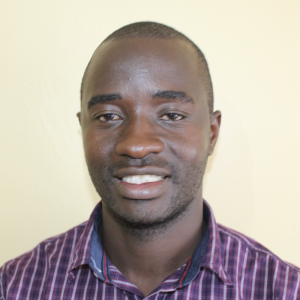Ebumbayi Primary School is located on the outskirts of Luanda town in a remote village called Ebumbayi. The school sits on a 3-acre piece of land with permanent buildings, and the Anglican Church sponsors it. The road leading to the school is well-paved thanks to the active area member of county assembly Akuse Jacktone. Established in 1966 by the community with just three classrooms, the school has since grown to serve a population of 489 students and 18 teachers and staff.
The only water sources on campus are two small plastic rain tanks that quickly run dry once the rains stop. The tanks' capacity is nowhere near large enough compared to the daily demand of the student body's drinking, cooking, and cleaning needs. When there is no water left at school, students have to leave class to fetch water from an open stream in the village. This not only wastes student's precious class time, but it supplies the school with very dirty water that is not fit for consumption. Students report cases of typhoid and other related waterborne diseases, especially during the dry season, when they most rely on the stream for water.
"The rate at which we are requested to go fetch water in a day at the stream is so alarming. Our normal class hours are interrupted, thus affecting my concentration in studies, and this has led to my dismal performance in my academics," said Faith, a student at the school.
"I have been a victim of typhoid infection while serving in this school. I had to abscond from my duties for two weeks to allow myself to seek medical attention to be fit to work. On various occasions, I spend the whole day without drinking water, especially when I forget to carry water with me to school," said Headteacher Johnson Onyino.
When students get sick from the water at school, they have to stay home, costing them more class time and driving their academic performance into the mud. Waterborne diseases can be costly to treat, draining students' families of their financial resources. And when there is a constant water shortage at school, basic hygiene and sanitation practices like handwashing and cleaning the latrines have to be sacrificed, trapping students in a cycle of fecal-oral diseases.
What We Can Do:
Rain Tank
A 75,000-liter rainwater catchment tank will help alleviate the water crisis at this school. The school will help collect the needed construction materials such as sand, bricks, rocks, and water for mixing cement. We will complement their materials by providing an expert team of artisans, tools, hardware, and the guttering system. Once finished, this tank will begin catching rainfall used by the school’s students and staff for drinking, handwashing, cooking, cleaning, and much more.
The school and we strongly believe that all of these components will work together to improve standards at this school, which will help lead to better student academic performance and unlock the potential for these students to live better, healthier lives.
Handwashing Stations
The student health club will oversee the two new handwashing stations we will provide and ensure they are kept clean and in working condition. The club leaders will fill the handwashing stations with water daily and make sure they are always supplied with a cleaning agent such as soap or ash.
VIP Latrines
Two triple-door latrine blocks will be constructed with local materials that the school will help gather. Three doors will serve the girls, and three doors will serve the boys. These new latrines will have cement floors designed to be easy to use and clean. And with a rain tank right on school property, there should be enough water to keep them clean.
Training on Health, Hygiene, COVID-19, and More
We will hold a one-day intensive training session with students, teachers, and parents. This training will cover a wide range of topics, including COVID-19 symptoms, transmission routes, prevention; personal and environmental hygiene; and the operation and maintenance of the rain tank, latrines, and handwashing stations. There will be a special emphasis on handwashing.
Our team of facilitators will use various methods to train, including participatory hygiene and sanitation transformation and asset-based community development. We will initiate a student health club, which will prepare students to lead other pupils into healthy habits at school and home. We will also lead lectures, group discussions and provide illustrative handouts to teach health topics and promote good hygiene practices within the school, including handwashing and water treatment. We will then conduct a series of follow-up training before transitioning to our regularly scheduled support visits throughout the year.

 Rainwater Catchment
Rainwater Catchment
 Rehabilitation Project
Rehabilitation Project










































